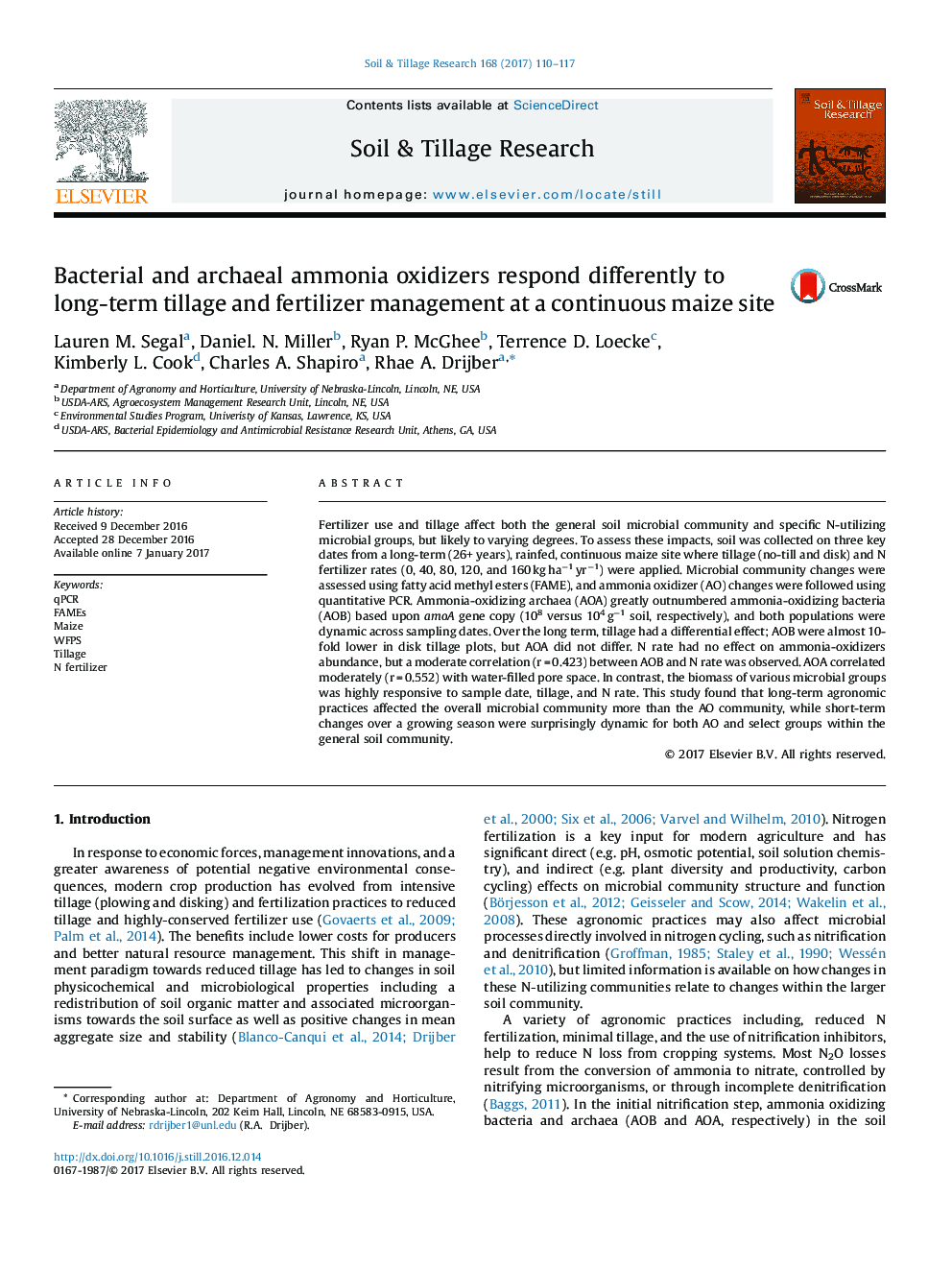| کد مقاله | کد نشریه | سال انتشار | مقاله انگلیسی | نسخه تمام متن |
|---|---|---|---|---|
| 4927555 | 1431835 | 2017 | 8 صفحه PDF | دانلود رایگان |
- Ammonia oxidizing archaea (AOA) and bacteria (AOB) were measured in cropped soil.
- AOA greatly outnumbered AOB and varied over time within a maize cropping system.
- AOB were almost 10-fold lower in disk plots, but AOA did not differ.
- N rate had no or minimal effect on ammonia oxidizer abundance.
- Microbial community biomass was dynamic and responsive to date, tillage and N rate.
Fertilizer use and tillage affect both the general soil microbial community and specific N-utilizing microbial groups, but likely to varying degrees. To assess these impacts, soil was collected on three key dates from a long-term (26+ years), rainfed, continuous maize site where tillage (no-till and disk) and N fertilizer rates (0, 40, 80, 120, and 160 kg haâ1 yrâ1) were applied. Microbial community changes were assessed using fatty acid methyl esters (FAME), and ammonia oxidizer (AO) changes were followed using quantitative PCR. Ammonia-oxidizing archaea (AOA) greatly outnumbered ammonia-oxidizing bacteria (AOB) based upon amoA gene copy (108 versus 104 gâ1 soil, respectively), and both populations were dynamic across sampling dates. Over the long term, tillage had a differential effect; AOB were almost 10-fold lower in disk tillage plots, but AOA did not differ. N rate had no effect on ammonia-oxidizers abundance, but a moderate correlation (r = 0.423) between AOB and N rate was observed. AOA correlated moderately (r = 0.552) with water-filled pore space. In contrast, the biomass of various microbial groups was highly responsive to sample date, tillage, and N rate. This study found that long-term agronomic practices affected the overall microbial community more than the AO community, while short-term changes over a growing season were surprisingly dynamic for both AO and select groups within the general soil community.
Journal: Soil and Tillage Research - Volume 168, May 2017, Pages 110-117
